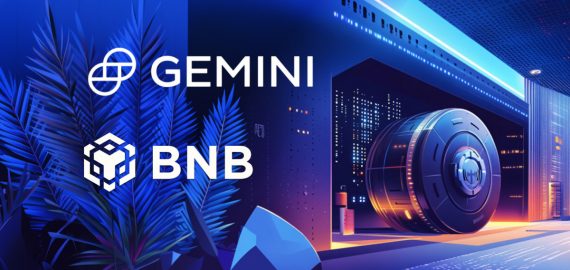The Future of Wireless Connectivity is Here as Solana Launches Roam, a Game-Changing Decentralized WiFi Network


In Brief
Solana’s Roam, a decentralized WiFi network, aims to enhance global connectivity by combining over a million hotspots, utilizing blockchain technology for improved user engagement.

Roam, a decentralized WiFi network recently unveiled by Solana, intends to transform global connection by combining more than a million WiFi hotspots into a safe network. This project is a component of the larger movement toward decentralized wireless (DeWi) technologies, which employ blockchain technology to improve user engagement and connection. Roam aims to create a self-sustaining ecosystem by rewarding users for their services and offering a smooth internet connection.
Recognizing the Structure and Functions of Roam
Roam uses Open Roaming protocols to provide dependable and safe internet connections, operating on the tenets of decentralized networks. Through a number of methods, such as daily check-ins and staking of Roam Tokens (ROAM), users may connect to a wide variety of WiFi hotspots and collect rewards.
Key Features of Roam
In the context of the decentralized wireless (DeWi) ecosystem, Roam provides a number of features aimed at encouraging user engagement and facilitating network growth.
One of the main features is User Incentives, which allows users to accrue Roam Points through daily check-ins and network contributions of their own hotspots. ROAM tokens, which offer rewards for continued participation and network expansion, may be obtained by staking these points.
The Roam Miner is another essential element that adds crypto-mining capabilities and improves user incentives. This feature enhances the value of users’ involvement in the ecosystem by enabling them to make extra money while remaining connected.
Furthermore, a key component of Roam’s strategy is community engagement. To promote engagement and loyalty, the platform invites users to validate already existing WiFi nodes and add new hotspots. While maintaining the network’s dependability and accessibility, this cooperative effort aids in its expansion.
The Decentralized WiFi Networks Market Context
The launch of Roam coincides with a growing need for dependable and expandable wireless networks. The proliferation of IoT devices and smart city efforts are expected to propel the worldwide wireless mesh network market’s growth. In this context, decentralized networks like Roam provide special benefits by offering adaptable solutions that may change to meet changing user requirements and environmental circumstances.
Comparing This Application to Others
Although Roam is a leader in the decentralized WiFi market, it works with other platforms that provide comparable services in different ways.
The Helium Network is one such competitor that lets users create hotspots and get tokens by offering wireless coverage. In contrast to Roam’s overarching goal of providing widespread WiFi connectivity to a larger audience, Helium primarily concentrates on low-power IoT devices.
Freenet is another noteworthy platform that uses a decentralized network to provide unfettered communication and information access. Freenet’s fundamental ideas of decentralization and open connection closely match Roam’s goals, even if it does not directly address WiFi access.
Furthermore, OpenRoaming offers a framework that guarantees uninterrupted communication between several networks without the need for user involvement. OpenRoaming is a basic technology that Roam uses to improve its connection solutions, even though it is not an application in and of itself.
Each of these platforms offers distinct features and operational models that support the wider development of wireless access, reflecting the rising need for decentralized connectivity solutions.
Decentralized Connectivity Solutions’ Obstacles
Even while initiatives like Roam have a lot of promise, they confront a number of obstacles that may affect their acceptance and long-term viability.
Market Readiness is one of the main obstacles. Some of the developments promoting decentralized connection, particularly those based on blockchain platforms like Solana, are criticized for perhaps being too advanced. There are still barriers to the widespread usage of these technologies, such as the requirement for more user education and wider market acceptability.
Development costs are still another important issue. Decentralized networks may be costly to build and operate, which may deter investors and users from making a commitment to the ecosystem. These expenses cover security, infrastructure, and continuous technology advancements.
Lastly, maintaining decentralized models still depends heavily on user engagement. Even if Roam provides incentives to promote interaction, sustained user interest will need steady community engagement and convincing proof of value over time.
For decentralized connection systems like Roam to be widely adopted and successful, these issues must be resolved.
Prospects for Roam in the Future
In the future, Roam hopes to expand its influence in a number of sectors by improving connection options for both consumers and businesses. Beyond simple internet access, its technology has the potential to be used in AI-driven environments that demand uninterrupted connectivity as well as smart home integrations.
Within a year of its introduction, Roam has reached over one million users in approximately 200 countries, demonstrating its progress in customer acquisition. This quick expansion highlights the need for creative fixes to fill in the holes in the current conventional telecommunications infrastructure.
Roam is positioned to take advantage of blockchain technology breakthroughs as a Web3 project to improve user security and privacy. Through the use of verifiable credentials (VCs) and decentralized identifiers (DIDs), Roam seeks to protect user anonymity while establishing a safe environment for data exchange.
The launch of Roam by Solana marks a major advancement in the field of decentralized connectivity solutions. Roam has the potential to transform internet access by uniting more than a million WiFi hotspots into a single network and encouraging user engagement.
It will be crucial for initiatives like Roam to strike a balance between innovation and useful applications as the market for dispersed wireless networks develops further. Long-term success in this competitive setting will depend on resolving issues with user engagement, development costs, and market readiness.
In an increasingly digital world, Solana’s Roam initiative’s future course is probably going to have an impact on larger telecommunications trends, opening the door for more user-centric and integrated approaches to connection.
Disclaimer
In line with the Trust Project guidelines, please note that the information provided on this page is not intended to be and should not be interpreted as legal, tax, investment, financial, or any other form of advice. It is important to only invest what you can afford to lose and to seek independent financial advice if you have any doubts. For further information, we suggest referring to the terms and conditions as well as the help and support pages provided by the issuer or advertiser. MetaversePost is committed to accurate, unbiased reporting, but market conditions are subject to change without notice.
About The Author
Victoria is a writer on a variety of technology topics including Web3.0, AI and cryptocurrencies. Her extensive experience allows her to write insightful articles for the wider audience.
More articles

Victoria is a writer on a variety of technology topics including Web3.0, AI and cryptocurrencies. Her extensive experience allows her to write insightful articles for the wider audience.

















































